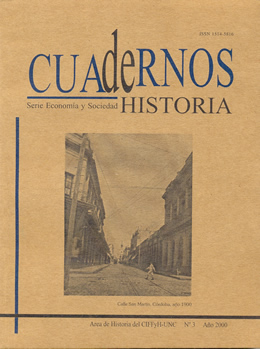The slave trade in the Río de la Plata. Notes for its study
DOI:
https://doi.org/10.53872/2422.7544.n3.9868Abstract
The slave trade presented atypical characteristics within the Spanish economic system, since it did not apply the mercantilist principles typical of Spanish colonial institutions. It involved negotiations with foreign traders or direct extraction from Africa, continental distribution routes by private traders or factors and, mainly, a circulation outside the fleet ships. As a result, the slave trade was often linked to smuggling, especially during the 17th century.
The internment of slaves was carried out from Buenos Aires to distant points of the Viceroyalty of Peru and contributed to the maintenance of a trans-continental route linking Buenos Aires with Santiago de Chile. This trade, promoted during the 17th century, was encouraged by the crown in the 18th century to the detriment of the royal slave route that linked Cartagena with Lima.
It is necessary, then, to make a brief approach to the particularities of this trade in the Río de la Plata in order to gain a better understanding of the problems presented by the sources for its study. Those that were used for the elaboration of this work in no way totalize the existing ones on the subject, but they were selected because they were considered representative of the cases presented.
Downloads
Published
How to Cite
Issue
Section
License
Copyright (c) 2014 Cuadernos de historia. Serie Economía y Sociedad

This work is licensed under a Creative Commons Attribution 4.0 International License.
Authors publishing in this journal accept the following terms:
a. The author maintains their copyrights and grants this journal the publication of the first original version of their work that is subject to the Creative Commons Attribution License 4.0. This license agreement allows:
Sharing — copy and redistribution of the published material by any means and formats
Reusing — remix, change, and creation of new material from the published work for any purpose, including commercial use.
b. Authors may enter other non-exclusive license agreements of distribution of the version of the published work (i.e. uploading the material on an institutional virtual archive or republishing it on a monographic volume) as long as they attribute the publication of the original version to this journal.
c. It is allowed and recommended that authors publicize their work on the Internet (i.e. on institutional virtual archives or on their personal or professional websites) after their work has been published in this journal.




